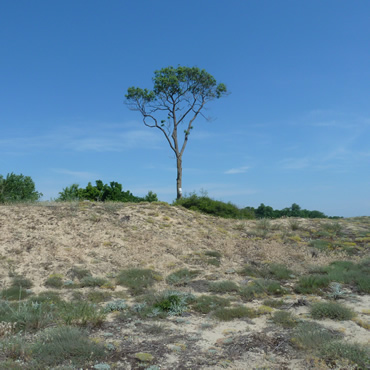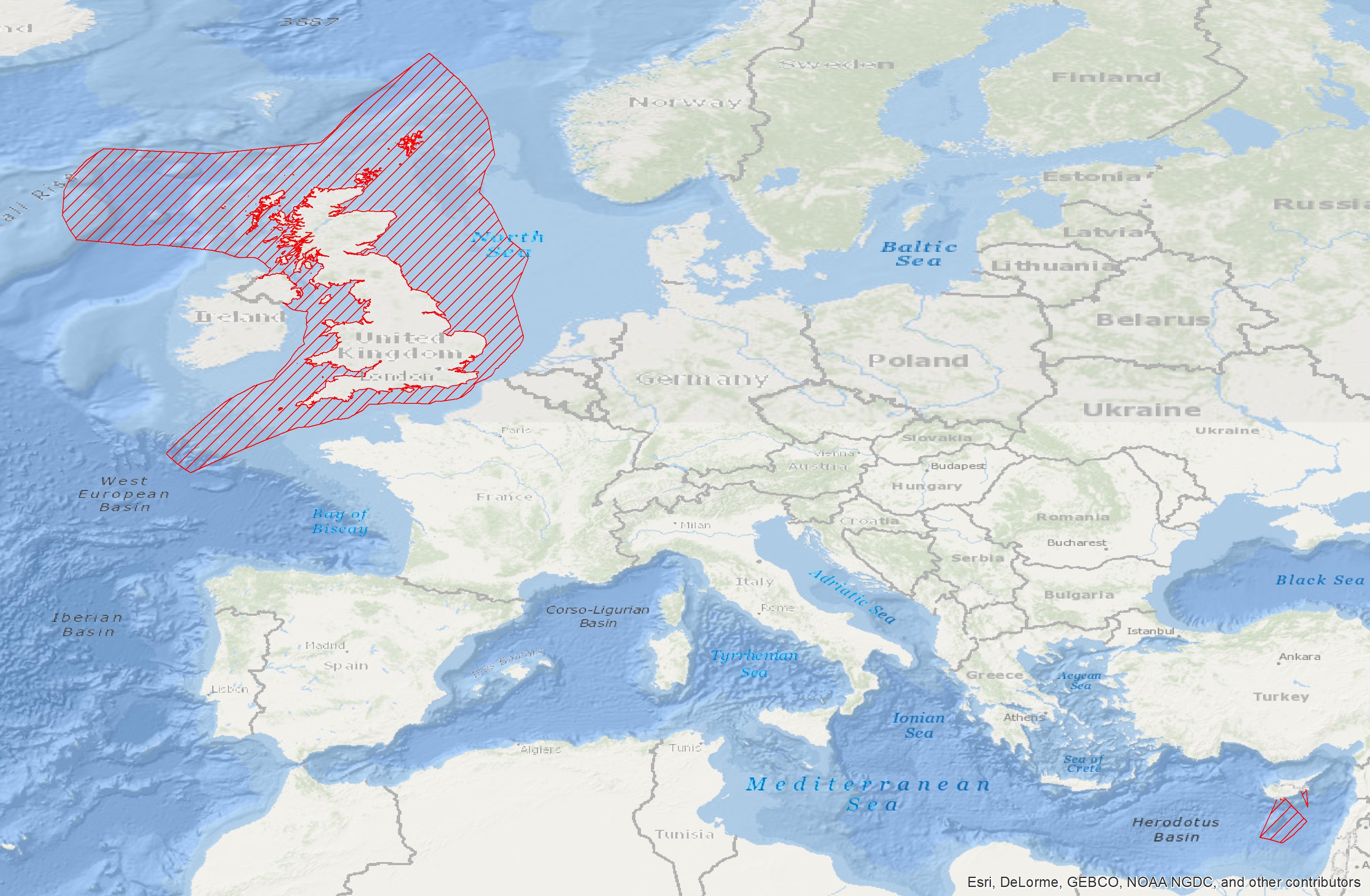GeoTIFF
Type of resources
Available actions
Topics
Keywords
Contact for the resource
Provided by
Years
Formats
Representation types
Update frequencies
status
Scale
Resolution
-
Maps of seasonal p90 (percentile 90) of Chla on the North Atlantic basin for the past ten years (2005-2014) using the Global Copernicus chla level 4 (L4) products (resolution of 4 km). Method as Gohin Francis, Saulquin Bertrand, Bryere Philippe (2010) Atlas de la Température, de la concentration en Chlorophylle et de la Turbidité de surface du plateau continental français et de ses abords de l’Ouest européen. Ifremer. http://archimer.ifremer.fr/doc/00057/16840/
-

Species distribution models (GAM, Maxent, and Random Forest ensemble) predicting the distribution of Sea pens and burrowing megafauna assemblages in the Northeast Atlantic. This community is considered ecologically coherent according to the cluster analysis conducted by Parry et al. (2015) on image samples. Modeling its distribution complements existing work on their definition and offers a representation of the extent of the areas of the North East Atlantic where they can occur based on the best available knowledge. This work was performed at the University of Plymouth in 2021.
-

Classification of the seabed in the Atlantic Ocean into broad-scale benthic habitats employing a non-hierarchical top-down clustering approach aimed at informing Marine Spatial Planning. This work was performed at the University of Plymouth in 2021 with data provided by a wide group of partners representing the nations surrounding the Atlantic Ocean. It classifies continuous environmental data into discrete classes that can be compared to observed biogeographical patterns at various scales. It has 3 levels of classification. The numbers in the raster layer correspond to individual classes. Description of these classes is given in McQuaid, K.A. et al. (2023).
-

-

Species distribution models (GAM, Maxent and Random Forest ensemble) predicting the distribution of Solenosmilia variabilis reef assemblage in the Celtic Sea. This community is considered ecologically coherent according to the cluster analysis conducted by Parry et al. (2015) on image sample. Modelling its distribution complements existing work on their definition and offers a representation of the extent of the areas of the North East Atlantic where they can occur based on the best available knowledge. This work was performed at the University of Plymouth in 2021.
-

Classification of the Atlantic Ocean seabed into broad-scale benthic habitats employing a hierarchical top-down clustering approach aimed at informing Marine Spatial Planning. This work was performed at the University of Plymouth in 2021 with data provided by a wide group of partners representing the nations surrounding the Atlantic Ocean. It classifies continuous environmental data into discrete classes that can be compared to observed biogeographical patterns at various scales. It has 3 levels of classification. For ease of use, a layer is provided for each level. Level 1 has 4 classes. Level 2 has 15 classes nested within level 1. Layers indices are 2 digits (1[level1 class index]1[level 2 class index]). Level 3 has 157 classes nested within level 2 and class names have 4 digits (1digit[level1 class index]1[level 2 class index]2[level 3 class index]). Note that the classification was performed for the whole world and thus it has more classes than in the presented layer.
-

-

This raster dataset represents input of impulsive anthropogenic sound in Europe Seas. Impulsive sounds are typically brief with a rapid rise time, i.e. a great change in amplitude over a short period of time. The main anthropogenic sources of impulsive underwater noise are typically impact pile driving for inshore and offshore construction, seismic exploration with airguns, explosions and sonar systems. The dataset was created by combining pulse-block-days (PBD) data from the ICES Registry (for HELCOM and OSPAR areas) and ACCOMBAS (for the Mediterranean Sea), resampled using the EEA 10 km grid. The dataset does not include the Black Sea. The temporal reference of this dataset is the period 2014-2016. The cell values have been transformed into a logarithmic scale (log10). This dataset has been prepared for the calculation of the combined effect index, produced for the ETC/ICM Report 4/2019 "Multiple pressures and their combined effects in Europe's seas" available on: https://www.eionet.europa.eu/etcs/etc-icm/etc-icm-report-4-2019-multiple-pressures-and-their-combined-effects-in-europes-seas-1.
-

This raster dataset represents the physical loss of the seabed in the European seas. Physical habitat loss is an extreme pressure on the marine ecosystem which was defined to include all impacts on the seabed which take more than 12 years to recover, a time span influencing even long living marine mammals and seabirds. Habitat is lost if its substrate, morphology or topography is permanently altered. The dataset is an aggregation of several different human activities that cause physical loss in the seabed: dredging and dumping of dredged material, oil and gas rigs, offshore installations, ports, sand and gravel extraction and windfarms. The resulting dataset is a raster (10km grid cell) derived from EMODnet, MED-IAMER and 4C Offshore datasets and with temporal reference from 2012 to 2017. Higher values mean more loss causing activity in the area. Due to its resolution, loss causing activity in a cell does not usually mean that all the seabed habitat in the area is lost. This dataset has been prepared for the calculation of the combined effect index, produced for the ETC/ICM Report 4/2019 "Multiple pressures and their combined effects in Europe's seas" available on: https://www.eionet.europa.eu/etcs/etc-icm/etc-icm-report-4-2019-multiple-pressures-and-their-combined-effects-in-europes-seas-1.
-

Maps of potential biomass catches (tons/year) per surface unit (0.25º latitude x 0.25º longitude) based on 3-D probability of occurrence for the main commercial fish species of the Atlantic. To map potential catches, first, mean catches (tons/year) were calculated according to Watson (2020) Global fisheries landings (V4) database for period 2010-2015 and then the total mean catch value for each species was redistributed according to the occurrence probability value that was modelled in 3-D using Shape-Constrained Generalized Additive Models (SC-GAMs). Potential catch value of each cell integrates the catches along the water column (from surface until 1000 m depth). See Valle et al. (2024) in Ecological Modelling 490:110632 ( https://doi.org/10.1016/j.ecolmodel.2024.110632 ), for more details.
 Catalogue PIGMA
Catalogue PIGMA